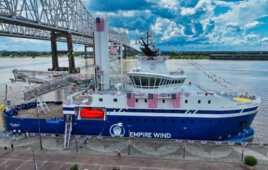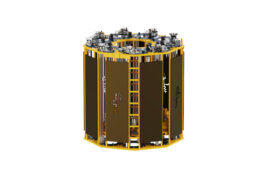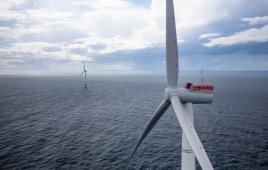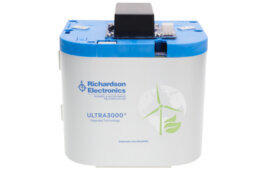
SkySpecs’ automated drone inspection is launched with the simple push of a button and can often be done in as little as 15 minutes. Data is then automatically analyzed, annotated, and ready for review within 48 hours.
Sending wind techs up-tower to inspect blades is a time-consuming and potentially dangerous task. Recent advancements in drone technology or UAVs (unmanned aerial vehicles) are slowly turning such labor-intensive maintenance efforts into a safer, more precise, and streamlined process. And wind companies are taking notice. For example, global energy companies such as Enel, E.On, and AES are starting to invest in drones for tower and blade inspections.
U.S.-based drone inspection company, SkySpecs, has been working with Sandia National Labs to validate turbine blade damage data using its automated drone inspection technology. SkySpecs has also collaborated with Siemens to deploy automated drone technology for onshore and offshore wind turbine inspections.
Ben Marchionna, System Integration & Test Engineering Lead at SkySpecs, says that drones offer many advantages for wind turbine inspections, with safety the most significant. “Using a drone for blade inspections is safer than a wind tech hanging off a rope at high altitude, in high winds, and for long periods,” he says. This type of manual inspection can take up to a full day for a single tower and months for a full fleet.
Marchionna notes that the Federal Aviation Administration (FAA) has a certification process, but it sets a low bar of entry for commercial operations. Although the FAA requires an aviation and systems knowledge test, the practical flying test for drone pilots is basic and falls short of meeting the demanding skills required for wind-turbine inspections. Currently, there are no additional regulatory qualifications required for wind sites.
So, Marchionna advises wind companies to use caution when sourcing and contracting a drone-inspection company. “The FAA’s recent Part 107 commercial drone certification program has resulted in a flood of ‘hobbyist’ drone pilots looking to earn extra cash,” he explains. “They will often solicit wind companies with the promise of safe, industrial UAVs, but show up inexperienced and often with a cheap, unreliable drone.”
Hobbyists typically lack wind experience and extensive drone flying skills, he says, so they pose a greater risk to wind-turbine site operations. This may result in asset damage, lost revenue, or serious accidents. “Unfortunately, the current FAA drone pilot certification is not difficult to pass compared to the skill level required to perform consistently safe and reliable drone inspections of turbines. So, look for drone companies with track records of successful experiences in the wind industry.”
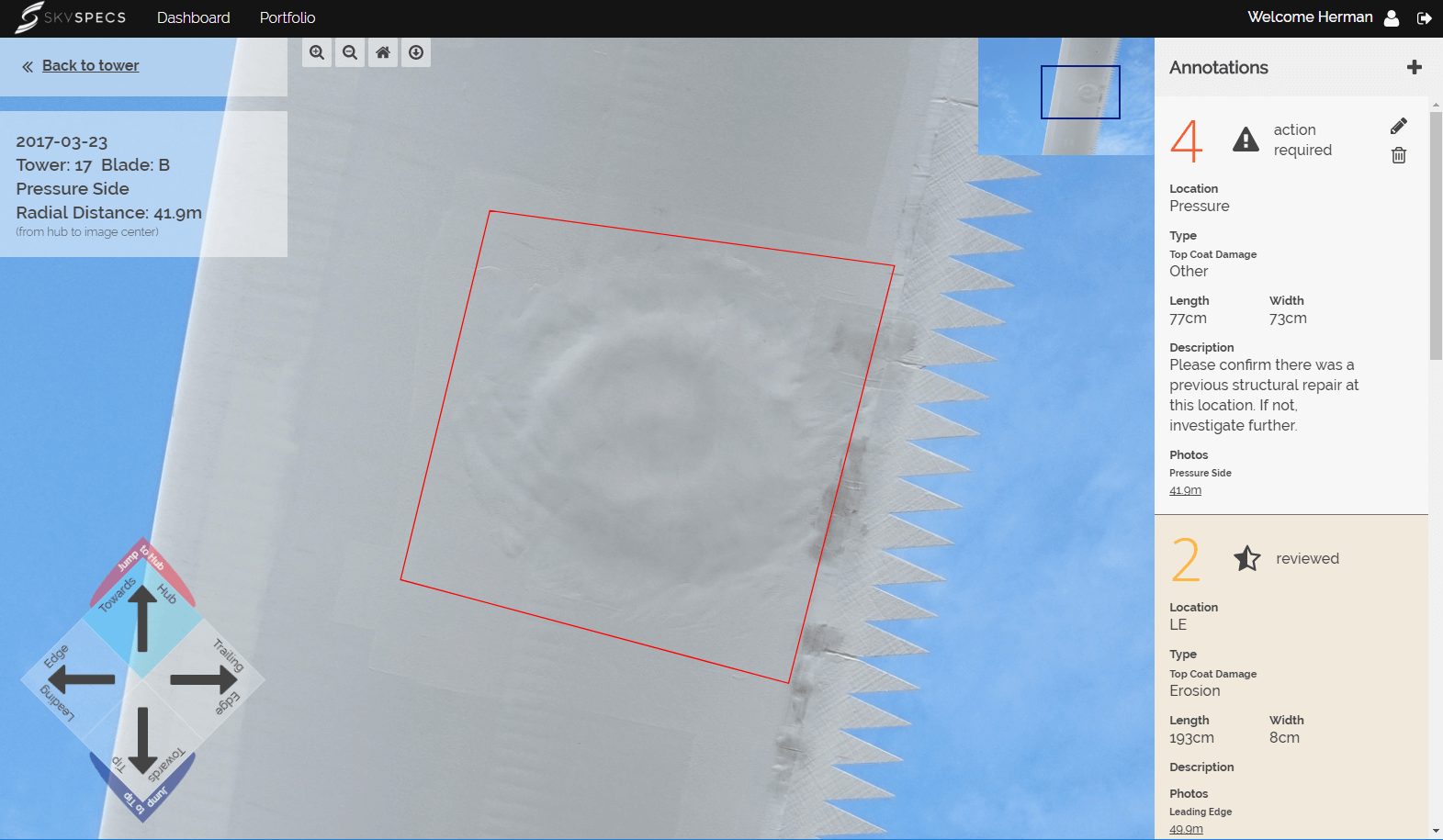
A picture taken from a drone captures clear evidence of erosion on a turbine blade.
“This is important because wind turbines present a difficult inspection environment,” he says. “Turbines are located in windy locations, and as a pilot navigates around the turbine blades, the wind speed and direction can change rapidly and unexpectedly because of how the turbine structure interacts with the wind. This makes manual flights exceedingly challenging and potentially dangerous.”
For instance, the blades and tower can present large visual obstructions. “It can be tough to get an accurate sense of how far a drone is away from the blades, and continually looking up-tower can cause operator fatigue.” Marchionna says even expert pilots can become physically or mentally fatigued, or simply lose situational awareness. “Losing sight of the drone for even a moment during flight can result in impacts with the turbine. Such an event could cause debris or hazardous material issues on the ground if, for example, a drone’s batteries are damaged on impact.”
Drone pilots must also adhere to numerous safety regulations associated with flight operations near a structure. For personnel on the ground, this typically involves standing a planned distance away from path of the drone, during takeoff, landing, and flight. “It is a pilot’s responsibility to ensure ground personnel are cognizant of a drone’s location in the sky at all times, and are aware of the safety procedures in the event of an in-flight emergency. When all is said and done, the safety of those at a wind site and of the turbine assets during an inspection comes down to the skill of the drone pilot.”
To mitigate many of these concerns, SkySpecs has developed an autonomous inspection drone, which the company says can maintain precise location, control, and image capture while navigating around a tower. “In this case, the pilot is on site strictly as a safety backup,” says Marchionna. “The automated drone’s on-board sensors are far more accurate than a pilot standing below the tower, and it can constantly analyze its position with respect to the tower while factoring in changes in wind condition. Plus, the automated computer cannot fatigue or forget where it is, so human error is no longer a safety factor.”
Automated drone inspections let customers identify problem areas faster, and optimize repair schedules and costs earlier and more accurately. “It’s not only faster but the measurable and repeatable data improves a wind operator’s ability to predict problems in the field, and deploy repair crews before an issue escalates,” he says. “This, in turn, leads to higher efficiency in the energy generation and lower overall operations and maintenance costs over the life of the turbine.”
Check out this and other articles in our Renewable Energy Guidebook, available here.
Filed Under: Drones, News, O&M
